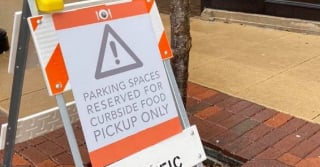Serving alcohol, and thus Liquor Liability Insurance, has been a common feature for many...
Decoding Auto Insurance Coverage Limits: Understanding the Numbers
Auto insurance policies often include a series of numbers, such as 100/300/200, which represent the limits of coverage provided by the policy. These numbers outline the maximum amount that the insurance company will pay out for different types of claims in the event of an accident or other covered incident.
Let's break down each number in the sequence:
Bodily Injury Liability (BI) per Person / BI per Accident - 100/300:
The first number (100 in this case) represents the maximum amount, in thousands of dollars, that the insurance company will pay for each individual who is injured in an accident caused by the policyholder. This coverage is meant to compensate for medical expenses, lost wages, and other damages incurred by the injured party.
The second number (300 in this case) indicates the total maximum coverage per accident, regardless of the number of people injured. This means that the insurance company will not pay out more than $300,000 for bodily injury claims resulting from a single accident.
Property Damage Liability (PD) - 200:
The third number (200 in this case) signifies the maximum amount, in thousands of dollars, that the insurance company will cover for property damage caused by the policyholder. Property damage liability covers repairs or replacement of another person's vehicle or other property that was damaged in an accident for which the policyholder is at fault.
When selecting auto insurance coverage, individuals can choose different coverage limits based on their preferences and financial circumstances. Higher coverage limits generally offer more protection, but they also come with higher premium costs. It's essential for policyholders to carefully consider their potential financial exposure in the event of an accident and choose coverage limits that adequately protect their assets and financial well-being.
It's crucial to understand that the coverage limits for each category in an auto insurance policy are separate and do not extend to cover expenses in another category if one limit is exceeded. For instance, consider a scenario where you are involved in an accident causing $220,000 in property damage, which exceeds the $200,000 property damage coverage limit. However, the bodily injury resulting from the accident totals $80,000, which is under the $100,000 per person and $300,000 per accident bodily injury coverage limits. In this case, even though there might be a "surplus" of $20,000 within the bodily injury coverage, it cannot be applied to cover the $20,000 coverage in the property damage category. The coverage limits for each category are distinct, and once the coverage limits are exhausted, the policyholder could be personally responsible for any additional costs.
When it comes to selecting auto insurance coverage limits, drivers should exercise careful consideration of their potential exposure in various scenarios. While state minimum requirements may seem appealing due to their lower cost, it's important for drivers to recognize that these limits might not provide sufficient protection in the event of a significant accident. Opting for higher coverage limits, if financially feasible, is a proactive step towards safeguarding one's financial well-being. Adequate coverage can help shield you from the potential financial devastation that could arise from a serious accident resulting in substantial medical bills, property damage, or legal liabilities. By choosing coverage limits beyond the minimum requirements set by the state, drivers ensure that they are better prepared to handle unexpected situations and mitigate the risk of being personally liable for significant expenses.





